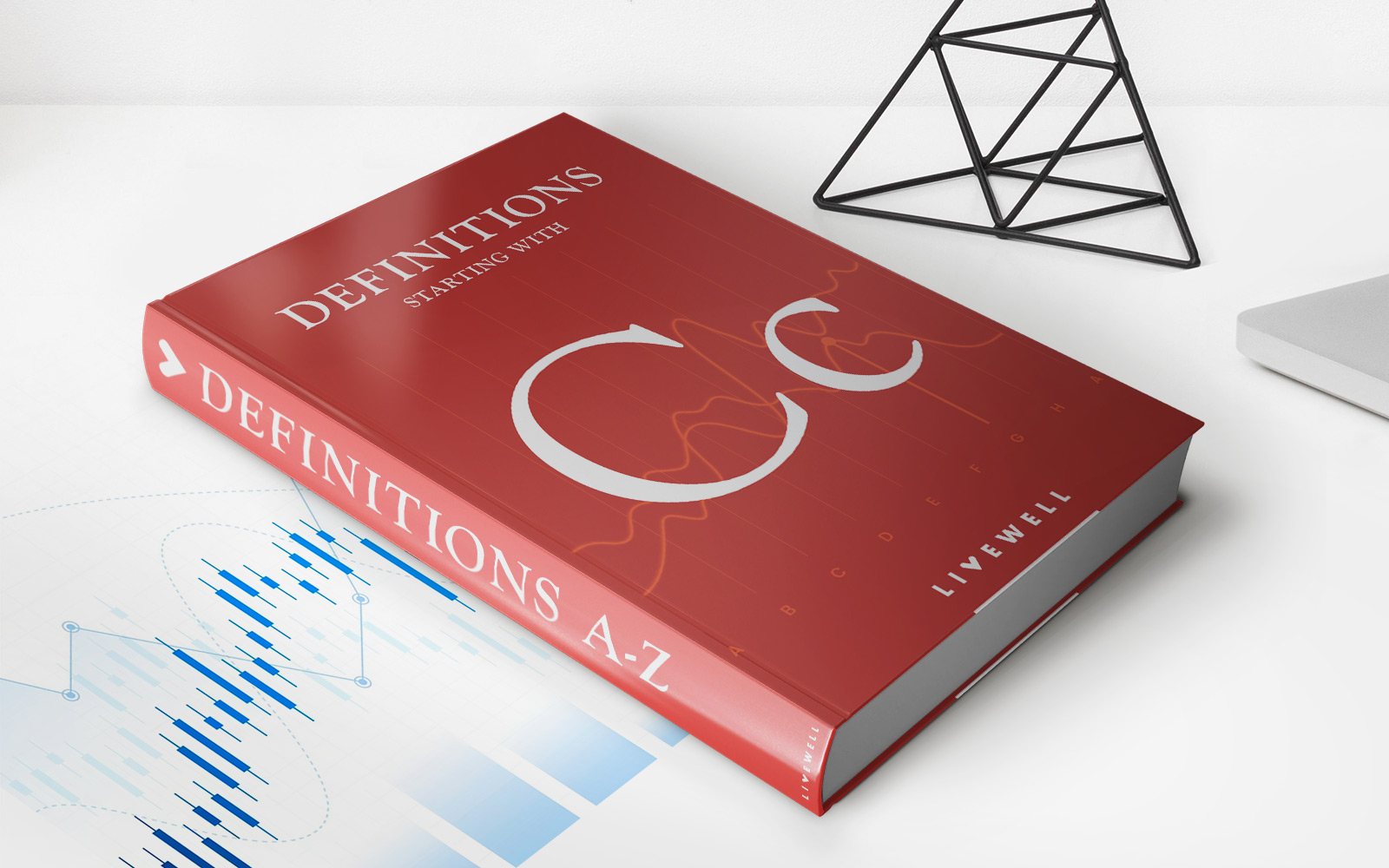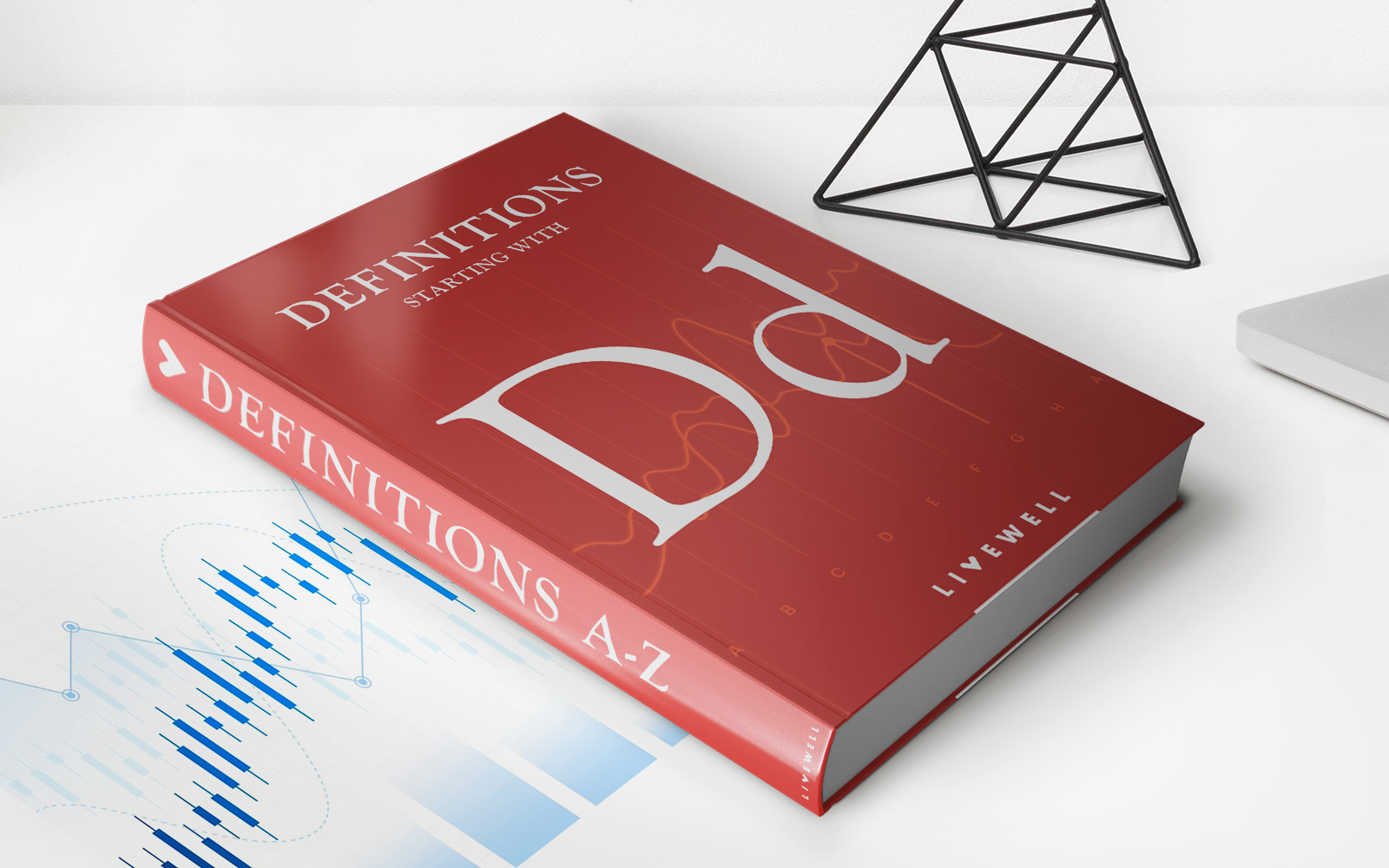Home>Finance>What Role Does Insurance Play In Financial Planning


Finance
What Role Does Insurance Play In Financial Planning
Published: November 2, 2023
Insurance plays a crucial role in financial planning by providing protection against unexpected events and helping individuals safeguard their finances. Discover how insurance can support your financial goals.
(Many of the links in this article redirect to a specific reviewed product. Your purchase of these products through affiliate links helps to generate commission for LiveWell, at no extra cost. Learn more)
Table of Contents
- Introduction
- Understanding Financial Planning
- The Importance of Insurance in Financial Planning
- Types of Insurance Coverage for Financial Planning
- Life Insurance
- Health Insurance
- Disability Insurance
- Long-Term Care Insurance
- Property and Casualty Insurance
- Liability Insurance
- Evaluating Insurance Needs in Financial Planning
- Determining the Right Insurance Coverage
- Analyzing Insurance Cost and Affordability
- Assessing Insurance Providers and Policies
- Integrating Insurance into Financial Plans
- Adjusting Insurance Coverage as Financial Needs Change
- Conclusion
Introduction
When it comes to financial planning, insurance plays a crucial role in safeguarding individuals and families from unexpected events and potential financial loss. Insurance acts as a safety net, providing protection and security in the face of life’s uncertainties. It is a key component of a comprehensive financial plan, as it helps individuals manage risk, protect their assets, and maintain financial stability.
Financial planning involves assessing an individual’s current financial situation, setting financial goals, and creating a roadmap to achieve those goals. It covers various aspects such as budgeting, savings, investments, and debt management. However, one aspect that is often overlooked or underestimated is the need for insurance coverage.
Insurance serves as a form of risk management, transferring the potential financial burden of unforeseen events to an insurance provider. It helps individuals mitigate the financial impact of circumstances such as illness, injury, disability, death, natural disasters, and property damage. By having the right insurance coverage in place, individuals can protect themselves and their loved ones from devastating financial consequences.
In this article, we will explore the importance of insurance in financial planning and delve into the various types of insurance coverage available. We will discuss how to evaluate insurance needs, select the appropriate coverage, and integrate insurance into a comprehensive financial plan. With a solid understanding of insurance and its role in financial planning, individuals can make informed decisions to safeguard their financial future.
Understanding Financial Planning
Financial planning is the process of assessing an individual’s current financial situation, establishing financial goals, and developing a strategy to achieve those goals. It involves analyzing income, expenses, assets, and liabilities to create a roadmap for financial success. A well-designed financial plan takes into account various factors such as retirement planning, investment strategies, tax planning, estate planning, and risk management.
The primary objective of financial planning is to help individuals achieve their financial goals and secure their financial future. It provides a comprehensive framework to make informed financial decisions and ensure that resources are allocated efficiently. A strong financial plan takes into consideration an individual’s unique circumstances, including their age, income, family situation, and risk tolerance.
Financial planning begins with setting goals. These goals can vary greatly depending on an individual’s priorities and aspirations. Common financial goals include saving for retirement, purchasing a home, funding education expenses, starting a business, or leaving a legacy for future generations. An effective financial plan identifies these goals and outlines the steps necessary to achieve them.
The next step in financial planning is assessing the current financial situation. This involves evaluating income sources, expenses, debts, and assets. Understanding one’s cash flow and net worth is critical in determining what adjustments need to be made to achieve the desired financial outcomes.
Once the current financial situation is understood and goals are established, a financial plan is developed. This plan outlines the strategies and actions required to reach the desired outcomes. It may include creating a budget, setting aside savings, investing in various asset classes, managing debt, and implementing risk management strategies such as insurance coverage.
Regular monitoring and review are essential components of financial planning. As circumstances change, goals may need to be adjusted, and strategies may need to be modified. Regularly reviewing the financial plan ensures that it remains aligned with one’s objectives and adapts to any changes in the financial landscape.
Overall, financial planning provides individuals with a roadmap to achieve their financial goals and maintain financial security. It empowers individuals to make informed financial decisions, minimize risk, and maximize opportunities for growth and prosperity.
The Importance of Insurance in Financial Planning
Insurance is a critical component of financial planning as it helps individuals protect their financial well-being and mitigate potential risks. It provides a safety net that safeguards against unexpected events that can have a significant impact on finances. Here are several key reasons why insurance is important in financial planning:
- Risk Management: Insurance serves as a form of risk management by transferring the financial burden of unforeseen events to an insurance provider. It helps individuals protect themselves and their loved ones from the financial consequences of events such as accidents, illnesses, disabilities, and natural disasters.
- Asset Protection: Insurance coverage is essential for safeguarding valuable assets such as homes, vehicles, and personal belongings. It provides financial compensation in case of property damage, theft, or other covered events, allowing individuals to repair or replace their assets without depleting their savings or incurring substantial debt.
- Healthcare Costs: Medical expenses can be expensive and unpredictable. Without adequate health insurance, individuals could face substantial financial burdens in the event of unexpected illnesses, injuries, or hospitalizations. Health insurance provides coverage for medical treatments, prescriptions, and hospital stays, helping individuals manage and mitigate the costs of healthcare.
- Income Replacement: Life insurance and disability insurance play a crucial role in replacing lost income due to death or disability. These forms of insurance provide financial support to beneficiaries or policyholders who are unable to work due to illness, injury, or death. They ensure that families can continue to meet their financial obligations, such as mortgage payments, education expenses, and daily living costs.
- Business Protection: For entrepreneurs and business owners, insurance is vital for protecting their business assets, mitigating liability risks, and ensuring continuity in the event of unforeseen circumstances. Business insurance coverage, such as general liability insurance, property insurance, and professional liability insurance, offers financial protection against potential lawsuits, property damage, and other risks specific to the business.
By incorporating insurance into their financial plans, individuals can reduce their exposure to financial risks and protect their hard-earned assets. Insurance provides peace of mind, allowing individuals to focus on their long-term financial goals and aspirations without the constant worry of potential financial hardships.
Types of Insurance Coverage for Financial Planning
In financial planning, various types of insurance coverage are available to address different needs and risks. Understanding these types of insurance can help individuals make informed decisions about the coverage that best suits their financial goals and circumstances. Here are some common types of insurance coverage to consider:
- Life Insurance: Life insurance provides a death benefit to the beneficiary upon the insured person’s death. It helps ensure financial security for loved ones by providing funds to cover expenses such as funeral costs, outstanding debts, and ongoing financial obligations. Life insurance can be term life insurance, which covers a specific period, or permanent life insurance that offers lifetime coverage with a cash value component.
- Health Insurance: Health insurance is essential for managing the costs of medical care. It provides coverage for doctor visits, hospital stays, surgeries, medications, and preventive care. Health insurance options include employer-sponsored plans, government programs like Medicare or Medicaid, or individual plans purchased on the marketplace. Having adequate health insurance coverage protects individuals from high medical expenses and ensures access to necessary healthcare services.
- Disability Insurance: Disability insurance provides income replacement if an individual becomes unable to work due to a disability or injury. It helps cover ongoing expenses, such as mortgage payments, bills, and daily living costs, ensuring financial stability during a period of limited or no income. Short-term disability insurance covers a temporary disability, while long-term disability insurance extends coverage for an extended period or until retirement age.
- Long-Term Care Insurance: Long-term care insurance helps cover the costs associated with long-term care services, such as nursing home care, assisted living, or in-home healthcare. It provides financial protection for individuals who may require assistance with activities of daily living or have chronic medical conditions that require ongoing care. Having long-term care insurance can help preserve assets and prevent the depletion of savings to pay for costly long-term care services.
- Property and Casualty Insurance: Property and casualty insurance covers damage or loss to personal property and provides liability protection. Homeowners insurance protects against damage to the home and its contents due to events like fire, theft, or natural disasters. Automobile insurance provides coverage for vehicle damage or injuries resulting from an accident. Other forms of property and casualty insurance include renters insurance, condo insurance, and umbrella insurance for additional liability coverage.
- Liability Insurance: Liability insurance offers protection in case an individual is held legally responsible for causing injury, damage, or loss to others. It helps cover legal costs, medical expenses, and damages awarded in a lawsuit. Types of liability insurance include general liability insurance for businesses, professional liability insurance for professionals, and personal liability insurance that extends liability coverage beyond the limits of home or auto insurance.
Each type of insurance coverage has specific features, benefits, and costs. It is important to evaluate individual needs, consider personal circumstances, and consult with an insurance professional to determine the appropriate types and amounts of coverage for financial planning.
Life Insurance
Life insurance is a crucial component of financial planning as it provides financial protection for loved ones in the event of the insured person’s death. It offers a way to ensure that dependents and beneficiaries are taken care of financially, even after the policyholder’s passing. Life insurance provides a death benefit, a lump sum payment, to the beneficiary upon the death of the insured.
There are two main types of life insurance: term life insurance and permanent life insurance.
Term Life Insurance: Term life insurance provides coverage for a specified period, typically 10, 20, or 30 years. It offers a death benefit if the insured passes away within the policy term. Term life insurance is an affordable option and is often chosen to cover financial obligations with a specific time frame, such as a mortgage or children’s education expenses. However, if the policyholder outlives the term, the coverage ends, and no benefits are paid out.
Permanent Life Insurance: Permanent life insurance provides coverage for the policyholder’s entire lifetime. It includes a death benefit as well as a cash value component that grows over time. There are different types of permanent life insurance, such as whole life insurance, universal life insurance, and variable life insurance. Permanent life insurance offers lifelong coverage, builds cash value that can be accessed during the insured’s lifetime, and can serve as an estate planning tool.
Life insurance is essential for several reasons:
Financial Protection: Life insurance provides a financial safety net for dependents and beneficiaries. It ensures that they are protected from the potential financial burden of funeral expenses, outstanding debts, mortgage payments, and ongoing living expenses. The death benefit can help maintain the financial stability and quality of life for loved ones left behind.
Debt Coverage: Life insurance can be used to cover outstanding debts, such as mortgages, loans, and credit card balances. If the insured person passes away, the death benefit can be used to pay off or reduce these financial obligations, preventing them from becoming a burden on the surviving family members.
Income Replacement: Life insurance provides a source of income replacement for the policyholder’s dependents. In the event of the insured’s death, the death benefit can help replace lost income and support the financial needs of the family. It can cover everyday expenses, education costs, and other financial obligations that the deceased would have provided for.
Business Continuity: Life insurance is essential for business owners to ensure the continuity of their business in the event of their death. It can provide funds to cover business expenses, repay debts, and facilitate the smooth transition of ownership. Life insurance can also be used in buy-sell agreements to facilitate the transfer of ownership to surviving business partners or heirs.
When considering life insurance, individuals should assess their financial obligations, evaluate the needs of their dependents, and determine the appropriate amount of coverage. Consulting with a financial advisor or insurance professional is recommended to ensure that the life insurance policy aligns with financial goals and provides adequate protection for loved ones.
Health Insurance
Health insurance is an essential component of financial planning as it provides coverage for medical expenses and helps individuals manage the costs of healthcare. It is designed to protect individuals and their families from the high costs associated with medical treatments, prescription medications, hospital stays, and preventive care.
There are several key aspects to understand about health insurance:
Types of Health Insurance: Health insurance can be obtained through various sources, including employer-sponsored plans, government programs like Medicare or Medicaid, or individual plans purchased on the marketplace. Each type of health insurance has different coverage options, premiums, and eligibility requirements. It is important to evaluate available options and select the one that best fits individual healthcare needs and budget.
Coverage and Benefits: Health insurance typically covers a range of medical services, including doctor visits, hospitalization, emergency care, laboratory tests, prescription medications, and preventive care. The specific coverage and benefits can vary depending on the insurance plan selected. It is important to review and understand the coverage details, including deductibles, copayments, and coinsurance, to ensure that the plan meets individual healthcare needs.
Financial Protection: One of the primary reasons for having health insurance is to protect against the high costs of medical care. Without insurance, individuals may face significant out-of-pocket expenses, especially for major medical treatments or hospital stays. Health insurance provides financial protection by covering a portion or all of the medical expenses, helping individuals manage and mitigate the financial burden of healthcare costs.
Access to Healthcare: Health insurance ensures access to necessary healthcare services. With insurance coverage, individuals can seek medical care from a network of healthcare providers within the insurance plan’s network. Insurance plans often negotiate discounted rates with healthcare providers, making healthcare more affordable. Health insurance also allows individuals to receive preventive care, screenings, and vaccinations that can help detect and prevent potential health issues before they become more serious and costly.
Legal Requirements: In many countries, having health insurance is a legal requirement. Individuals may be subject to penalties or fines if they do not maintain proper health insurance coverage. It is important to comply with the legal requirements related to health insurance and ensure continued coverage to avoid any potential financial and legal consequences.
Health insurance is a vital component of financial planning as it helps individuals manage the costs of healthcare and protect their financial well-being. It provides a safety net that ensures access to necessary medical care and mitigates the financial burden of medical expenses. It is important to carefully review and select a health insurance plan that suits individual healthcare needs, budget, and preferences.
Disability Insurance
Disability insurance is an important component of financial planning as it offers income protection in the event that an individual becomes unable to work due to a disability or injury. It provides a source of financial support to help cover ongoing expenses and maintain financial stability during a period of reduced or lost income.
There are two main types of disability insurance: short-term disability insurance (STD) and long-term disability insurance (LTD).
Short-Term Disability Insurance: Short-term disability insurance provides coverage for a limited period, typically up to six months, following a qualifying disability. It offers a percentage of the insured person’s income as a benefit, often ranging from 50% to 70%. Short-term disability insurance is designed to cover temporary disabilities, such as recovery from surgery or short-term illnesses.
Long-Term Disability Insurance: Long-term disability insurance provides coverage for an extended period, often until retirement age, if the insured person is unable to work due to a disabling condition. It offers a portion of the individual’s pre-disability income, typically 50% to 70%, as a benefit. Long-term disability insurance is intended to provide income replacement for long-lasting or permanent disabilities that prevent an individual from engaging in their occupation or any gainful employment.
Disability insurance is important for several reasons:
Income Replacement: Disability insurance replaces lost income if an individual is unable to work due to a disability. It provides financial support to cover everyday expenses, such as mortgage or rent payments, utility bills, groceries, and other financial obligations. Disability insurance ensures that individuals and their families can maintain their standard of living and meet their financial needs during periods of disability.
Asset Protection: Disability insurance helps protect assets by preventing individuals from depleting their savings or relying on credit cards or loans to cover expenses during a disability. It ensures that hard-earned savings and assets are preserved for future needs and financial goals.
Peace of Mind: Having disability insurance provides peace of mind, knowing that there is a financial safety net in place in case of a disability. It alleviates concerns about how to cover daily living expenses and allows individuals to focus on their recovery and rehabilitation without the added stress of financial hardship.
Customization and Supplemental Coverage: Disability insurance can be customized to match individual needs and preferences. Additional riders and features can be added to enhance the coverage, such as cost-of-living adjustments, residual disability benefits, and future purchase options. Supplemental disability insurance policies can also be purchased to supplement coverage provided by employer-sponsored plans or government disability benefits.
When considering disability insurance, it is important to understand the coverage terms, waiting periods, benefit periods, and definitions of disability. Consulting with a financial advisor or insurance professional can help individuals navigate the options and select the disability insurance coverage that aligns with their financial goals and needs.
Long-Term Care Insurance
Long-term care insurance is a crucial component of financial planning, as it provides coverage for the costs associated with long-term care services. These services may include nursing home care, assisted living facilities, in-home healthcare, and other forms of extended care that may be needed due to chronic illnesses, disabilities, or cognitive impairments.
Long-term care insurance offers financial protection and peace of mind by helping individuals preserve their assets and cover the high costs often associated with long-term care. Here are some important aspects to consider:
Coverage for Extended Care: Long-term care insurance typically covers the costs of long-term care services that are not covered by traditional health insurance or Medicare. It provides financial support for assistance with daily living activities such as bathing, dressing, eating, and using the bathroom. This insurance coverage can be crucial if an individual requires assistance due to age-related conditions, chronic illnesses, or disabilities.
Preserving Assets: Long-term care can quickly deplete an individual’s savings and assets. Long-term care insurance helps preserve assets by covering the costs associated with care services, allowing individuals to maintain their financial stability and legacy. It prevents the need to rely on personal savings or family resources to pay for long-term care, reducing the burden on loved ones.
Choice of Care Settings: Long-term care insurance gives individuals the flexibility to receive care in the setting of their choice. Whether that is in a nursing home, an assisted living facility, or in their own home, having long-term care insurance ensures that individuals can access the care they need without financial constraints.
Flexibility in Coverage: Long-term care insurance policies have varying levels of coverage and options to tailor the policy to an individual’s needs. Different options include elimination periods (the waiting period before benefits kick in), benefit periods (the duration of coverage), and inflation protection (to account for rising care costs over time). Assessing personal long-term care needs and discussing options with an insurance professional can help determine the appropriate coverage to include.
Qualification and Premiums: Long-term care insurance premiums are typically based on several factors, including age, health, and the level of coverage selected. It is important to note that premiums are generally lower if insurance is purchased at a younger age when individuals are typically in better health. Additionally, underwriting requirements may be more stringent for individuals with pre-existing health conditions. Long-term care insurance policies often require an individual to meet certain criteria, such as being unable to perform a specified number of activities of daily living or having a cognitive impairment, to trigger benefits.
Long-term care insurance provides individuals with financial support and protection during a period of extended care needs. It allows individuals to maintain their quality of life, receive the necessary care services, and protect their financial future.
Property and Casualty Insurance
Property and casualty insurance is a vital component of financial planning, offering protection for individuals and their assets in the face of various risks. This type of insurance covers damage or loss to personal property and provides liability protection against claims made by others for injury or property damage. Property and casualty insurance encompasses a range of coverage options that help individuals safeguard their homes, vehicles, personal belongings, and protect themselves from potential legal liabilities.
Here is an overview of the main types of property and casualty insurance:
Homeowners Insurance: Homeowners insurance protects against damage to a home and its contents caused by covered perils such as fire, theft, vandalism, or natural disasters. It typically provides coverage for the structure of the home, personal belongings, and liability protection in case someone is injured on the insured property.
Auto Insurance: Auto insurance provides coverage for vehicles against physical damage and liability protection. It includes coverage for repairs or replacement of the insured vehicle in the event of an accident, theft, or damage caused by covered perils. Auto insurance also offers liability coverage for bodily injury or property damage caused by the insured vehicle to others.
Renters Insurance: Renters insurance is designed for individuals renting a home or apartment. It covers personal belongings against damage or loss due to fire, theft, or other covered events. Additionally, renters insurance provides liability protection if someone is injured while visiting the rented premises.
Condo Insurance: Condo insurance provides coverage for condominium owners, similar to homeowners insurance but tailored to the specific needs of condo residents. It covers personal property, interior structures, and liability protection. The coverage may also include coverage for common areas or shared risks within the condominium community.
Umbrella Insurance: Umbrella insurance offers extended liability coverage that goes beyond the limits of home or auto insurance. It provides an additional layer of protection against catastrophic events or large liability claims. Umbrella insurance is designed to protect individuals from significant financial losses that may result from lawsuits or expensive settlements.
Property and casualty insurance is essential for several reasons:
Asset Protection: Property and casualty insurance protect valuable assets such as homes, vehicles, and personal belongings from damage, theft, or loss. Having insurance coverage ensures that individuals can repair or replace their assets without bearing the full financial burden.
Liability Protection: Property and casualty insurance provide liability protection, safeguarding individuals from potential legal claims and lawsuits. Liability coverage helps cover legal costs, medical expenses, and damages awarded to third parties in cases where the insured person is held responsible for injury or property damage.
Peace of Mind: Having property and casualty insurance offers peace of mind, knowing that there is financial protection in place in case of unexpected events. It relieves individuals from the stress and anxiety of potential financial losses and allows them to focus on their daily lives and future plans without constant worry.
Individuals should carefully evaluate their insurance needs for property and casualty coverage, considering factors such as asset value, location, and personal circumstances. Consulting with an insurance professional can help determine the appropriate coverage options, deductibles, and limits to best protect their assets and mitigate potential risks.
Liability Insurance
Liability insurance is a vital component of financial planning, offering protection against potential legal claims and lawsuits. It provides coverage for individuals who may be held legally responsible for causing injury, damage, or loss to others. Liability insurance helps protect personal assets, provide financial support for legal defense, and cover any damages awarded to the injured party.
Here are some common types of liability insurance:
General Liability Insurance: General liability insurance provides coverage for businesses against claims related to bodily injury, property damage, or personal and advertising injury. It protects businesses from the financial consequences of accidents, injuries, or property damage that may occur on their premises or as a result of their operations or products.
Professional Liability Insurance: Professional liability insurance, also known as errors and omissions (E&O) insurance, is designed for professionals who provide specialized services or advice. It protects professionals, such as doctors, lawyers, architects, and consultants, from potential claims of negligence, errors, or omissions in their professional work that may cause harm or financial loss to their clients.
Personal Liability Insurance: Personal liability insurance provides coverage for individuals or families against claims of bodily injury or property damage that may happen on or off their premises. It protects against potential legal liability arising from accidents or incidents for which the insured person is deemed responsible, such as a slip and fall accident or a pet causing harm to someone.
Umbrella Insurance: Umbrella insurance offers extended liability coverage that goes beyond the limits of primary liability insurance policies. It provides an additional layer of protection, typically in increments of $1 million, and covers a wider range of liability claims. Umbrella insurance is designed to protect individuals from significant financial losses resulting from lawsuits with high settlement amounts.
Liability insurance is important for several reasons:
Asset Protection: Liability insurance protects personal assets, such as savings, investments, and property, from being seized or depleted in the event of a legal judgment or settlement. It ensures that individuals do not bear the full financial burden of compensation or legal expenses if they are found liable for causing harm or damage to others.
Legal Defense: Liability insurance provides financial support for legal defense costs, including attorney fees, court costs, and settlement negotiations. It ensures that individuals have access to legal representation to defend their case, even in situations where they may not ultimately be found liable.
Peace of Mind: Having liability insurance offers peace of mind, knowing that there is financial protection in place in case of unexpected events or accidents. It reduces the anxiety and stress associated with potential lawsuits or claims and allows individuals to focus on their daily lives and future plans without constant worry.
It is important for individuals and businesses to assess their liability risks carefully. Consulting with an insurance professional can help determine the appropriate coverage options, limits, and deductibles based on specific circumstances and needs. Adequate liability insurance coverage is a critical aspect of a comprehensive financial plan, providing financial protection and security against potential legal liabilities.
Evaluating Insurance Needs in Financial Planning
Evaluating insurance needs is a crucial step in financial planning as it helps individuals determine the right type and amount of insurance coverage to protect their financial well-being. Evaluating insurance needs involves assessing potential risks, evaluating personal circumstances, and considering financial goals. Here are some key factors to consider when evaluating insurance needs:
Assessing Risk Exposure: Start by assessing potential risks and hazards that may impact your finances. Consider factors such as your age, health, family situation, occupation, and lifestyle. Evaluate the likelihood of specific risks, such as accidents, illnesses, disabilities, natural disasters, or liability claims. Understanding and prioritizing these risks will guide you in identifying the types of insurance coverage that are most relevant to your situation.
Considering Financial Obligations: Evaluate your financial obligations, including mortgage or rent payments, outstanding debts, and ongoing living expenses. Determine how these financial obligations may be impacted in the event of an unexpected loss or emergency. Insurance coverage should be adequate to protect and cover these financial obligations, ensuring that you and your loved ones are financially secure in challenging times.
Assessing Dependents’ Needs: Consider the financial impact your absence or inability to provide for your dependents would have. Evaluate their needs, such as educational expenses, daily living costs, and ongoing financial support. Life insurance and disability insurance can help ensure that your dependents are taken care of if you pass away or become unable to work due to a disability.
Evaluating Existing Coverage: Review any existing insurance coverage, such as employer-sponsored plans, benefits from government programs, or personal policies. Assess the extent of coverage provided by these policies and identify any gaps or areas of insufficiency. This evaluation will help determine if additional coverage is required to enhance protection or fill any gaps in your insurance portfolio.
Considering Long-Term Care Needs: Evaluate the potential need for long-term care services, such as nursing home care, assisted living, or in-home healthcare. Assess the costs associated with these services and determine if long-term care insurance is necessary to protect your assets and prevent financial hardships in the event long-term care is required.
Factoring in Budget and Affordability: Consider your budget and affordability when evaluating insurance needs. Determine the premiums that you can comfortably pay without straining your finances. It is essential to strike a balance between adequate coverage and affordability to ensure that insurance protection remains sustainable in the long run.
It is recommended to consult with an insurance professional or financial advisor when evaluating insurance needs. They can provide guidance and help you navigate through the various coverage options, evaluate risk exposures, and determine the appropriate insurance coverage to protect your financial well-being.
Determining the Right Insurance Coverage
When it comes to determining the right insurance coverage, it is essential to consider individual needs, risks, and financial goals. Different types of insurance serve different purposes, and selecting the right coverage involves careful evaluation. Here are some key considerations to help determine the appropriate insurance coverage:
Assessing Specific Risks: Begin by evaluating the specific risks and hazards that are most relevant to your circumstances. Consider factors such as age, health, occupation, lifestyle, and financial obligations. For example, if you have dependents who rely on your income, life insurance can provide financial protection in case of your death. If you have valuable assets, property and casualty insurance can protect them from loss or damage.
Evaluating Coverage Needs: Determine the amount of coverage that will adequately protect you or your loved ones in the event of a claim. Consider factors such as financial obligations, income replacement needs, and potential healthcare costs. For example, if you have significant debts or mortgage payments, you may need higher coverage amounts to ensure these obligations can be met if you are unable to work or pass away.
Understanding Policy Terms and Exclusions: Familiarize yourself with the terms and conditions of the insurance policy. Read and understand the coverage limits, deductibles, exclusions, and any other terms that may impact your claims. Pay attention to specific scenarios that are excluded from coverage to gain a clear understanding of what risks are covered and what are not.
Considering Affordability: Assess your budget to determine the premiums you can comfortably afford. Keep in mind that insurance coverage should be sustainable in the long run. Consider the trade-off between higher premiums and the level of coverage you need. It may be wise to strike a balance that provides adequate protection while remaining within your budgetary constraints.
Reviewing Personal Circumstances: Regularly review your insurance coverage to align it with any changes in your personal circumstances. Life events such as marriage, the birth of a child, or changes in income or assets may require adjustments to your coverage amounts or types of insurance. Periodically reassess your needs and make updates accordingly.
Consulting with Professionals: Seeking guidance from insurance professionals or financial advisors can be invaluable in determining the appropriate insurance coverage. They can help you navigate the insurance landscape, understand policy details, and recommend suitable coverage options based on your unique needs and goals.
Remember that insurance is a personal decision, and the types and amounts of coverage needed will vary from person to person. By conducting a thorough evaluation of risks, coverage needs, policy terms, and personal circumstances, you can make informed decisions to ensure you have the right insurance coverage in place to protect your financial well-being.
Analyzing Insurance Cost and Affordability
When analyzing insurance cost and affordability, it is important to ensure that the insurance coverage you select aligns with your budget and financial goals. Finding the right balance between adequate coverage and affordable premiums is key. Here are some factors to consider when analyzing the cost and affordability of insurance:
Evaluate Premiums: Start by assessing the premiums associated with the insurance coverage. Insurance premiums can vary based on factors such as age, health condition, coverage amount, and deductibles. Compare premiums from different insurance providers to find the most competitive rates for the coverage you need.
Consider Deductibles and Copayments: Take into account the deductibles and copayments associated with the insurance policy. Higher deductibles often result in lower premiums, but they require individuals to pay more out-of-pocket before insurance kicks in. Evaluate your ability to cover potential deductibles and copayments and find a balance that suits your budget and risk tolerance.
Review Coverage Limits: Analyze the coverage limits offered by the insurance policy. Ensure that the coverage limits are sufficient to protect your financial interests in the event of a claim. Balancing the right coverage limits will help avoid being underinsured or overpaying for coverage you do not need.
Weigh the Trade-offs: Consider the trade-offs between coverage and affordability. Some insurance policies may offer comprehensive coverage but come with higher premiums. Assess whether the additional coverage is necessary based on your specific circumstances. Evaluate your financial risks and prioritize the coverage that provides the most significant protection for your needs.
Look for Discounts: Inquire about any potential discounts that may be available. Insurance providers often offer discounts for various reasons, such as bundling multiple policies, maintaining a good credit score, having safety features on vehicles or homes, or being a member of certain professional organizations. Take advantage of these discounts to reduce your insurance costs.
Consider the Long-Term Financial Impact: While affordability is important, consider the long-term financial impact of insufficient coverage. Inadequate insurance coverage may lead to financial strain and potential financial hardships in the event of a claim. Weigh the potential costs of being underinsured against the affordability of the premiums to make an informed decision.
Review and Update Regularly: It is essential to regularly review and update your insurance coverage as your life circumstances change. Periodically assess your coverage needs, financial situation, and personal goals to ensure that your insurance policies continue to align with your evolving needs and remain affordable.
Throughout the insurance analysis process, it can be beneficial to seek guidance from insurance professionals or financial advisors. They can provide insights into the potential costs associated with different coverage options, help identify potential gaps or overlaps in coverage, and guide you in making decisions that strike the right balance between cost and coverage.
Assessing Insurance Providers and Policies
When assessing insurance providers and policies, it is important to conduct thorough research to ensure that you are selecting a reliable insurer and obtaining the best policy for your needs. Here are some key factors to consider when evaluating insurance providers and policies:
Financial Stability: Assess the financial stability of the insurance provider. Look for companies that have a strong financial rating from independent rating agencies. A financially stable insurer is more likely to fulfill their obligations and pay out claims in a timely manner.
Reputation and Customer Service: Research the reputation of the insurance provider and read customer reviews. Look for positive feedback regarding their claims process, communication, and customer service. A company with a good reputation and strong customer service can provide a smoother and more satisfactory experience if you need to make a claim.
Coverage Options: Evaluate the range of coverage options and policies offered by the insurance provider. Ensure that they offer the specific types of insurance that you need. Compare the coverage limits, deductibles, and exclusions across different policies to find the best fit for your individual needs.
Policy Terms and Conditions: Read and understand the terms and conditions of the insurance policy. Pay attention to details such as coverage limits, exclusions, waiting periods, and any applicable deductibles or copayments. Ensure that you are comfortable with the terms and that they align with your expectations and requirements.
Claims Process: Investigate the insurer’s claims process to understand how efficient and straightforward it is. Look for information about their claim settlement ratio and average time taken to process and settle claims. A smooth and efficient claims process is essential in times of need and can significantly impact your overall experience with the insurance provider.
Premiums and Affordability: Consider the affordability of the premiums and the value you receive in return. Compare quotes from different insurers to find competitive pricing for the coverage you need. Be cautious of insurers offering significantly lower premiums, as it may indicate potential gaps in coverage or poor customer service.
Policy Flexibility and Customization: Assess the level of flexibility and customization offered by the insurance policies. Look for options to tailor the coverage to your specific needs, such as additional riders or optional coverage enhancements. Customizable policies allow you to personalize the coverage to adequately protect your assets and mitigate your risks.
Consult Professional Advice: Consider seeking guidance from insurance professionals or financial advisors who have expertise in evaluating insurance providers and policies. They can provide insights, recommend reputable insurers, and help you navigate through the complexities of insurance offerings.
By conducting thorough research, comparing options, and evaluating various factors, you can make informed decisions when selecting insurance providers and policies. The goal is to find a reputable insurer that offers the coverage you need at a fair price, ensuring your financial protection and peace of mind.
Integrating Insurance into Financial Plans
Integrating insurance into financial plans is essential for comprehensive risk management and protection of one’s financial well-being. Insurance acts as a safety net, providing financial security for individuals and families in the face of unexpected events. Here are some key considerations for integrating insurance into financial plans:
Identify Insurance Needs: Assess your specific insurance needs based on your financial goals, obligations, and risk tolerance. Consider the different types of insurance coverage, such as life insurance, health insurance, disability insurance, and property and casualty insurance, that align with your circumstances and provide adequate protection.
Create a Budget for Insurance Premiums: Allocate a portion of your budget for insurance premiums. Consider how insurance costs fit into your overall financial plan and adjust your budget accordingly to ensure you can afford the necessary coverage. Prioritize insurance as a fundamental aspect of your financial security.
Coordinate Coverage with Goals and Objectives: Align your insurance coverage with your financial goals and objectives. For example, if one of your goals is to protect your family’s financial future, ensuring adequate life insurance coverage to replace lost income is a priority. If retirement planning is a priority, consider long-term care insurance to mitigate potential healthcare costs in retirement.
Review and Update Policies Regularly: Regularly review and update your insurance policies to ensure they remain in line with your evolving circumstances. As your life changes, such as marriage, starting a family, or acquiring new assets, your insurance needs may change as well. Stay proactive by reassessing your coverage periodically and adjusting as necessary.
Consider Tax Implications: Understand the potential tax implications associated with insurance policies. Some policies, such as certain life insurance and long-term care insurance policies, may offer tax advantages or allow for tax-free distributions. Consult with a tax professional or financial advisor to understand the tax implications of your insurance decisions.
Coordination with Estate Planning: Integrate insurance into your estate planning strategy. Life insurance, for example, can be used to provide liquidity for estate taxes or to equitably distribute assets among beneficiaries. Coordinate your insurance coverage with your overall estate plan to ensure your wishes are carried out and to simplify the process for your loved ones.
Minimize Coverage Overlaps and Gaps: Avoid coverage overlaps or gaps by carefully reviewing your insurance policies. Consider how multiple policies may interact and ensure that you are not paying for redundant coverage. On the flip side, verify that there are no gaps in your coverage that expose you to unnecessary risk.
Seek Professional Guidance: It can be beneficial to seek the guidance of insurance professionals or financial advisors who can offer expertise in integrating insurance into financial plans. They can help assess your insurance needs, recommend suitable coverage options, and ensure that your insurance aligns with your overall financial goals.
By integrating insurance into your financial plan, you can protect your assets, mitigate financial risks, and provide a safety net for your loved ones. Insurance serves as an essential component of a comprehensive financial strategy, offering peace of mind and financial security in the face of life’s uncertainties.
Adjusting Insurance Coverage as Financial Needs Change
As your financial needs change over time, it is important to regularly review and adjust your insurance coverage to ensure it aligns with your evolving circumstances. Adapting your insurance coverage is crucial to maintain adequate protection and minimize any potential gaps or overlaps. Here are some key factors to consider when adjusting your insurance coverage:
Life Events and Changes: Evaluate the impact of significant life events and changes on your insurance needs. Marriage, childbirth, divorce, or changes in employment can all influence the amount and type of insurance coverage required. These events may necessitate additional life insurance, changes in health insurance coverage, or adjustments to property and casualty insurance policies.
Financial Obligations: Review your financial obligations regularly to assess whether your existing coverage is adequate. Consider factors such as mortgage payments, outstanding debts, and financial responsibilities for dependents. Ensure that your insurance coverage is sufficient to protect your loved ones and cover any financial obligations in the event of an unexpected loss.
Healthcare Needs: As your healthcare needs change, evaluate your health insurance coverage. Consider factors such as changes in your health condition, the need for additional coverage, or the desire to switch to a different health insurance plan. Assess whether your current plan provides the necessary coverage for your anticipated healthcare expenses.
Assessing Assets: Periodically review the value and nature of your assets to ensure they are adequately protected. As your asset portfolio grows, assess whether your property and casualty insurance coverage is still sufficient. If you acquire new valuable assets, such as a home, artwork, or high-value possessions, consider adjusting your coverage accordingly to protect these assets from loss or damage.
Revisiting Policy Terms: Review the terms and conditions of your insurance policies periodically. Pay attention to coverage limits, deductibles, and exclusions. Ensure that the policy terms still meet your needs and expectations. Adjustments may be necessary if you find that your coverage is too limited, the deductibles are too high, or certain exclusions no longer align with your circumstances or priorities.
Consulting with Professionals: Seek advice from insurance professionals or financial advisors when adjusting your insurance coverage. They can provide insights into industry trends, evaluate policy options, and ensure that your coverage aligns with your financial goals. These professionals can help you make informed decisions based on your changing circumstances and provide recommendations tailored to your specific needs.
Regular Coverage Reviews: Schedule regular reviews of your insurance coverage, ideally on an annual basis or whenever significant changes occur. Set reminders to assess and adjust your coverage as needed. A regular review process ensures that your insurance continues to provide the necessary protection and keeps pace with your evolving financial situation.
Regularly adjusting your insurance coverage is an essential part of financial planning. By staying proactive and adapting to changes in your financial needs, you can ensure that your insurance coverage remains relevant, effective, and provides the necessary protection to safeguard your financial well-being.
Conclusion
Insurance plays a crucial role in financial planning, providing protection and peace of mind in the face of life’s uncertainties. It is an integral component of a comprehensive financial strategy, helping individuals mitigate risks, protect their assets, and maintain financial stability. Throughout this article, we have explored the importance of insurance in financial planning and highlighted various types of coverage available.
Understanding your financial goals, assessing risks, and evaluating specific insurance needs are key steps in integrating insurance into your financial plan. Life insurance protects loved ones and ensures financial security in the event of an untimely death. Health insurance covers medical expenses to manage healthcare costs effectively. Disability insurance provides income replacement if you are unable to work due to a disability. Long-term care insurance safeguards against significant costs related to extended care needs. Property and casualty insurance protect assets from damage or liability claims. Liability insurance provides protection in case of legal claims or lawsuits.
When evaluating insurance coverage, it is essential to consider factors such as cost, affordability, policy terms, coverage limits, and the financial stability of the insurance provider. Regularly reviewing and adjusting your insurance coverage as your financial needs change is crucial to ensure ongoing protection and adequate coverage.
Consulting with insurance professionals or financial advisors can provide expert guidance in determining the right coverage options and assessing insurance needs based on individual circumstances. Their expertise can help navigate the complexities of insurance policies and align coverage with financial goals.
Integrating insurance into your financial plan requires careful consideration, periodic review, and adjustments to meet your changing needs. By doing so, you can protect yourself, your loved ones, and your assets from unexpected events, ensuring long-term financial security and peace of mind.














